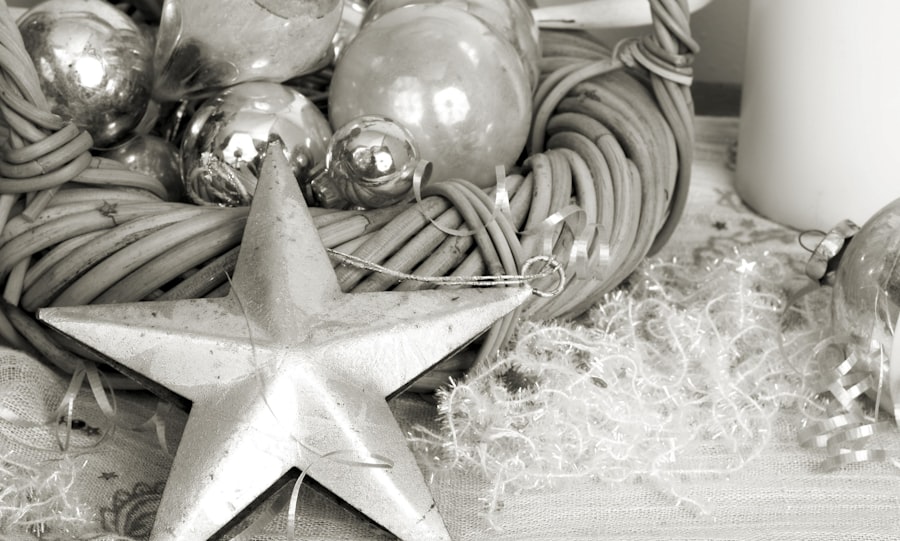Planting Ranunculus Bulbs: A Step-by-Step Guide

Ranunculus bulbs are a popular choice among gardeners for their vibrant and showy flowers. These bulbs belong to the Ranunculaceae family and are native to Asia and Europe. They are known for their large, multi-petaled blooms that come in a wide range of colors, including red, pink, yellow, orange, and white.
One of the main benefits of planting ranunculus bulbs is the beauty they bring to any garden or landscape. Their flowers are often compared to roses or peonies due to their fullness and intricate layers of petals. Additionally, ranunculus bulbs are relatively easy to grow and can be planted in both containers and garden beds.
Key Takeaways
- Ranunculus bulbs are a popular choice for gardeners due to their vibrant colors and easy care.
- When choosing a spot to plant ranunculus bulbs, make sure it has well-draining soil and receives plenty of sunlight.
- Before planting, prepare the soil by removing weeds and adding compost or fertilizer.
- Plant ranunculus bulbs in the fall for spring blooms, and make sure to space them out properly.
- Water regularly and fertilize every few weeks to keep the bulbs healthy and thriving.
Choosing the Right Spot for Planting Ranunculus Bulbs
To ensure the success of your ranunculus bulbs, it is important to choose the right spot for planting. Ranunculus bulbs thrive in full sun, so it is best to select a location that receives at least six hours of direct sunlight each day. They also prefer well-draining soil, so avoid areas that tend to hold water or become waterlogged.
When choosing a planting spot, consider the overall aesthetic of your garden or landscape. Ranunculus bulbs make excellent additions to flower beds, borders, or even as cut flowers in arrangements. They can also be planted in containers or pots for a burst of color on patios or balconies.
Preparing the Soil for Planting Ranunculus Bulbs
Ranunculus bulbs require well-draining soil to prevent rot and fungal diseases. Before planting, it is important to prepare the soil properly. Start by removing any weeds or debris from the area where you plan to plant the bulbs.
Next, amend the soil with organic matter such as compost or well-rotted manure. This will improve the soil’s fertility and drainage capabilities. Mix the organic matter into the top few inches of soil using a garden fork or tiller.
When to Plant Ranunculus Bulbs
| Month | Temperature Range | Soil Temperature | Days to Germination | Days to Bloom |
|---|---|---|---|---|
| October | 50°F – 70°F | 50°F – 60°F | 10 – 14 | 90 – 120 |
| November | 40°F – 60°F | 45°F – 55°F | 10 – 14 | 90 – 120 |
| December | 30°F – 50°F | 40°F – 50°F | 10 – 14 | 90 – 120 |
The best time to plant ranunculus bulbs is in the fall, typically between September and November. This allows the bulbs to establish their root systems before the cold winter months. However, planting times may vary depending on your climate and location.
Factors that can affect planting time include the average first frost date in your area and the specific variety of ranunculus bulbs you are planting. It is important to research the specific requirements of the variety you have chosen to ensure optimal planting time.
How to Plant Ranunculus Bulbs
Planting ranunculus bulbs is a relatively simple process. Follow these step-by-step instructions for successful planting:
1. Dig a hole that is approximately 2-3 inches deep and wide enough to accommodate the bulb.
2. Place the bulb in the hole with the pointed end facing up.
3. Cover the bulb with soil, gently firming it down to remove any air pockets.
4. Water thoroughly after planting to settle the soil around the bulb.
It is important to space ranunculus bulbs at least 6-8 inches apart to allow for proper growth and airflow. This will help prevent overcrowding and reduce the risk of disease.
Watering Ranunculus Bulbs

Proper watering is essential for the health and growth of ranunculus bulbs. These plants prefer moist soil but can be susceptible to rot if overwatered. It is important to find a balance between keeping the soil consistently moist and avoiding waterlogged conditions.
Water ranunculus bulbs deeply once or twice a week, depending on weather conditions. Aim to provide about 1 inch of water per week, either through rainfall or irrigation. Monitor the soil moisture levels regularly and adjust watering accordingly.
Fertilizing Ranunculus Bulbs
Ranunculus bulbs benefit from regular fertilization to promote healthy growth and abundant blooms. Before planting, incorporate a slow-release fertilizer into the soil to provide nutrients over an extended period of time.
During the growing season, apply a balanced fertilizer every 4-6 weeks. Look for a fertilizer with equal amounts of nitrogen, phosphorus, and potassium (NPK). Follow the manufacturer’s instructions for application rates and methods.
Caring for Ranunculus Bulbs
To ensure the longevity and health of your ranunculus bulbs, it is important to provide proper care and maintenance. Here are some tips to keep your bulbs thriving:
1. Mulch around the plants to help conserve moisture and suppress weed growth.
2. Deadhead spent flowers regularly to encourage continuous blooming.
3. Monitor for pests such as aphids or snails and take appropriate measures to control them.
4. Protect the bulbs from extreme cold temperatures by covering them with a layer of mulch or straw in winter.
Common Problems with Ranunculus Bulbs
While ranunculus bulbs are generally easy to grow, they can be susceptible to certain problems. Here are some common issues you may encounter:
1. Rot: Overwatering or poorly draining soil can lead to bulb rot. Ensure proper drainage and avoid overwatering to prevent this problem.
2. Fungal Diseases: Ranunculus bulbs can be prone to fungal diseases such as powdery mildew or botrytis. Provide good air circulation and avoid overhead watering to reduce the risk of these diseases.
3. Pests: Aphids, snails, and slugs are common pests that can damage ranunculus plants. Monitor for signs of infestation and take appropriate measures to control them.
Harvesting and Storing Ranunculus Bulbs
Ranunculus bulbs can be harvested once the foliage has turned yellow and died back. Carefully dig up the bulbs, taking care not to damage them. Shake off any excess soil and allow the bulbs to dry in a cool, dry place for a few days.
Once the bulbs are dry, remove any remaining foliage and store them in a cool, dark place until the next planting season. It is important to store the bulbs in a well-ventilated container or mesh bag to prevent moisture buildup and rot.
Ranunculus bulbs are a beautiful addition to any garden or landscape. With their vibrant colors and showy blooms, they are sure to attract attention and bring joy to any space. By choosing the right spot, preparing the soil properly, and providing adequate care and maintenance, you can enjoy the beauty of ranunculus bulbs year after year. So why not give them a try and add a touch of elegance to your garden?
If you’re looking for more information on how to plant ranunculus bulbs, be sure to check out this helpful article on Lawn World’s website. They provide a comprehensive guide on the proper techniques and steps involved in planting these beautiful flowers. From choosing the right location to preparing the soil and caring for the bulbs, this article covers it all. To learn more, visit https://www.lawnworld.com/how-to-plant-ranunculus-bulbs.
FAQs
What are ranunculus bulbs?
Ranunculus bulbs are small, round bulbs that produce beautiful, brightly colored flowers. They are commonly used in gardens and as cut flowers.
When should I plant ranunculus bulbs?
Ranunculus bulbs should be planted in the fall, typically between September and November, depending on your climate. This allows them to establish roots before the winter and bloom in the spring.
Where should I plant ranunculus bulbs?
Ranunculus bulbs should be planted in a sunny location with well-draining soil. They can be planted in garden beds, containers, or raised beds.
How do I plant ranunculus bulbs?
To plant ranunculus bulbs, dig a hole that is about 2-3 inches deep and place the bulb with the pointed end facing up. Cover the bulb with soil and water thoroughly. Space the bulbs about 4-6 inches apart.
How often should I water ranunculus bulbs?
Ranunculus bulbs should be watered regularly, but not overwatered. Water them deeply once a week, or more often if the soil is dry.
When will ranunculus bulbs bloom?
Ranunculus bulbs typically bloom in the spring, usually between March and May, depending on your climate. They will continue to bloom for several weeks.
How do I care for ranunculus bulbs after they bloom?
After ranunculus bulbs bloom, allow the foliage to die back naturally. This will allow the bulb to store energy for the next growing season. Once the foliage has died back, you can dig up the bulbs and store them in a cool, dry place until it is time to plant them again in the fall.



